1/n #SadarPranam to Ishvara within everyone in & supporting @INCIndia including you.
I did not want to, but I think we should again remember who #AntoniaMaino is.
I share information about the Criminal Family in this thread.
I did not want to, but I think we should again remember who #AntoniaMaino is.
I share information about the Criminal Family in this thread.
https://twitter.com/JhaSanjay/status/1252944684634251264
2/n It was always claimed in Election's affidavit (2004) that #SoniaGandhi attended @Cambridge_Uni (snippet-1) which was later changed to Lennox Cook School, Cambridge.


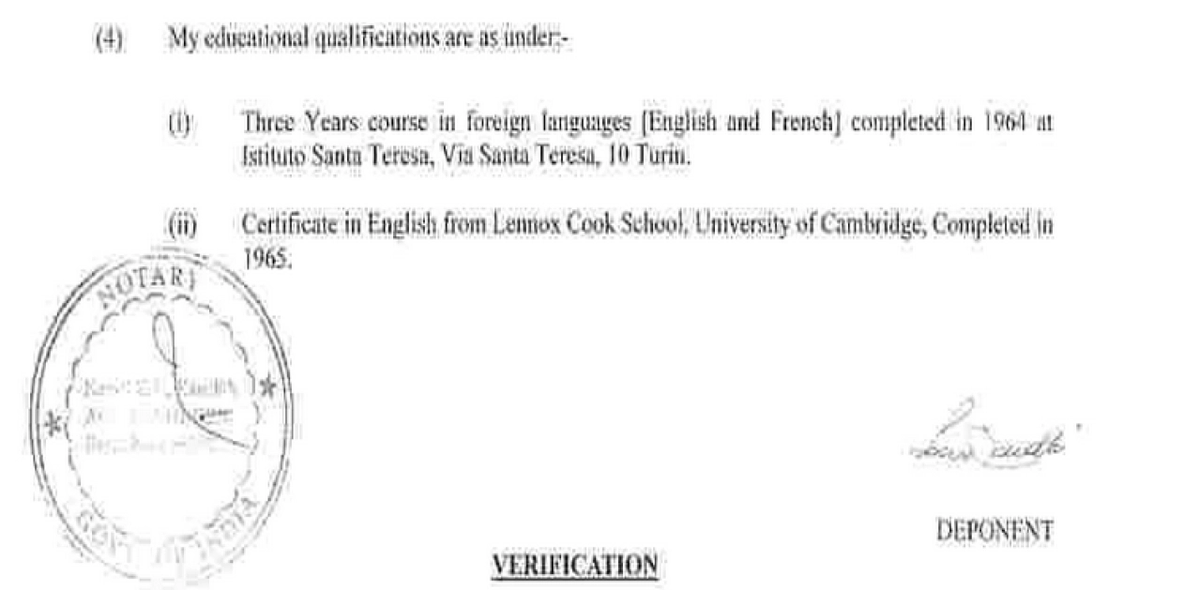
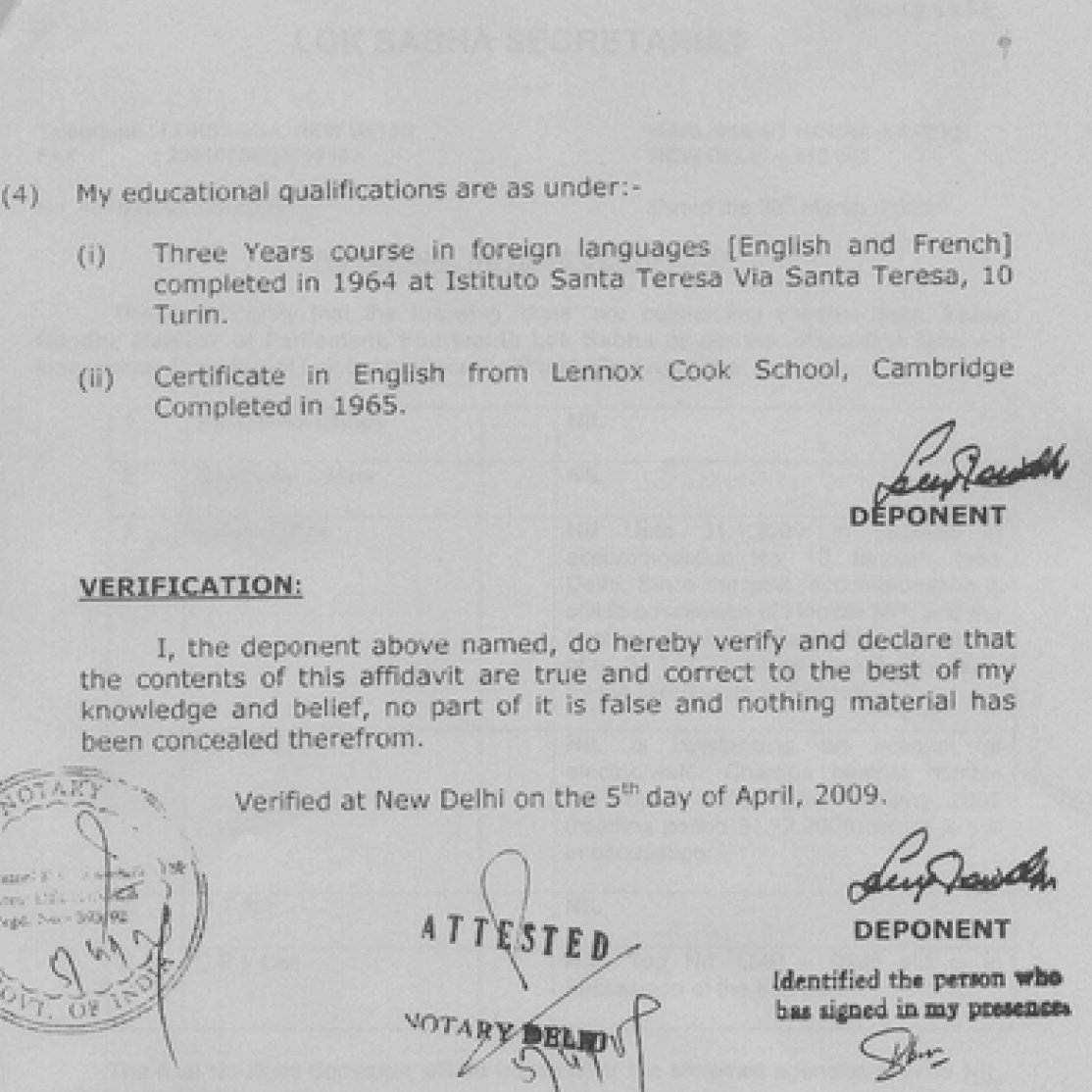
3/n In 1972, #AntoniaMainoSonia took a job of an insurance agent of Oriental Fire Insurance, a public sector firm & showed her business address as the official residence of the then Prime Minister and her mother-in-law, Mrs Indira Gandhi despite being a foreigner.
CRIMINAL ACT.
CRIMINAL ACT.
4/n As per the records she gave up her Italian Citizenship only in 1983.
Also note, her name indeed is #AntanioMaino , so I don't know what was baffling people so much about it.
Thanks to @Swamy39 for getting records straight.
Also note, her name indeed is #AntanioMaino , so I don't know what was baffling people so much about it.
Thanks to @Swamy39 for getting records straight.

5/n Not to miss #AntoniaMaino 's father had fought in WWII alongside Hitler's Wehrmacht on the eastern front. He was a loyal supporter of Mussolini & National Fascist Party.
One may like to read this interview with Stefano Maino.
outlookindia.com/magazine/story…
One may like to read this interview with Stefano Maino.
outlookindia.com/magazine/story…
6/n Her name was already in the electoral roll of 1980 though she held Italian Passport till 1983.
Check this photocopy.
I'm revealing more facts from the next tweet 7/n.
Check this photocopy.
I'm revealing more facts from the next tweet 7/n.
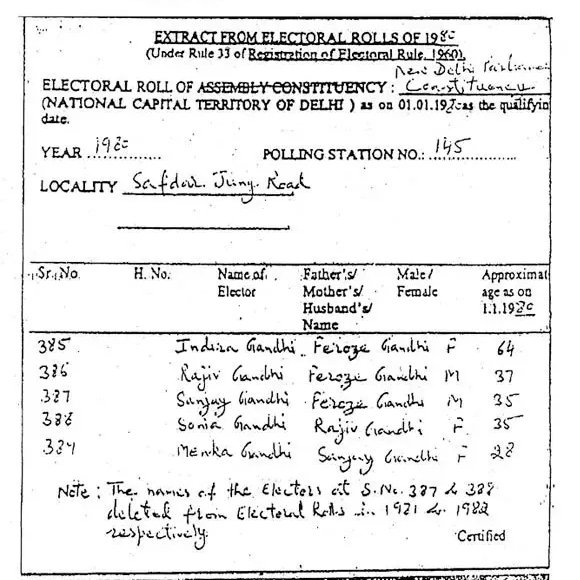
7/n As you can clearly understand @JhaSanjay her illegal registration as a voter in January 1980, was a gross violation of the law, enough to cause cancellation of her visa. But the Delhi Chief Electoral Officer got her name deleted only in 1982.
8/n There is a very important point to be noticed. Your leader @JhaSanjay is very fluent in "Russian" apart from "Italian" although she did undergo formal training for "English". Not to miss, #AntoniaMaino along with her sisters Anushka and Nadia was given Russian name: Sonia.
9/n I'll talk about the Russian link later. It is even more interesting.
@JhaSanjay now I'm going to use the charge sheet prepared by #CBI for the issue of "antique thefts".
At times I feel how do you guys face people for being led by such a fraudulent person #AntoniaMaino .
@JhaSanjay now I'm going to use the charge sheet prepared by #CBI for the issue of "antique thefts".
At times I feel how do you guys face people for being led by such a fraudulent person #AntoniaMaino .
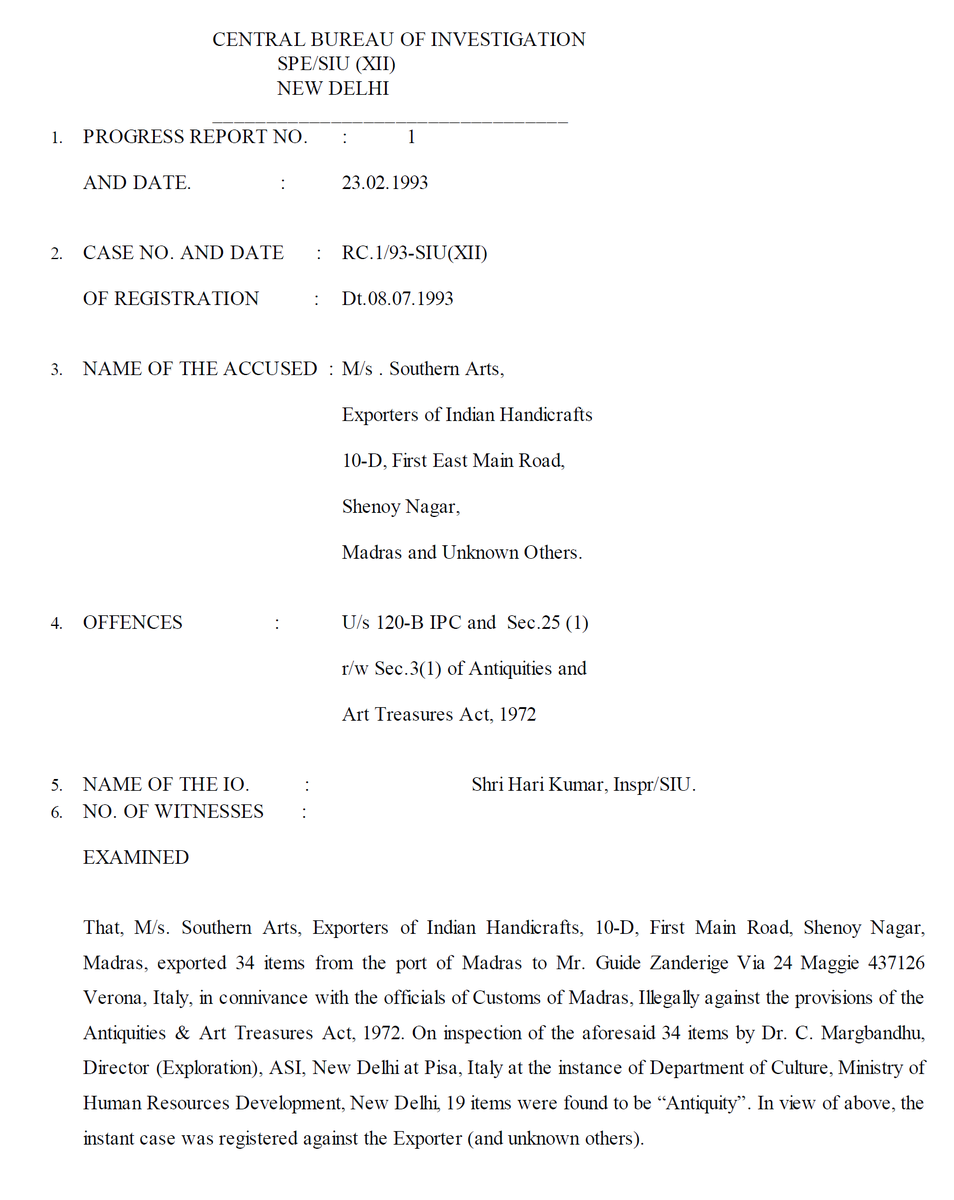
10/n In 1978, the commission of Inquiry headed by the SC Judge Mr.A.C.Gupta #AntoniaMainoSonia was found indulged in Criminal offense while buying shares of MTSPL & MHVPL.
Read the excerpts from the charge sheet.
Read the excerpts from the charge sheet.
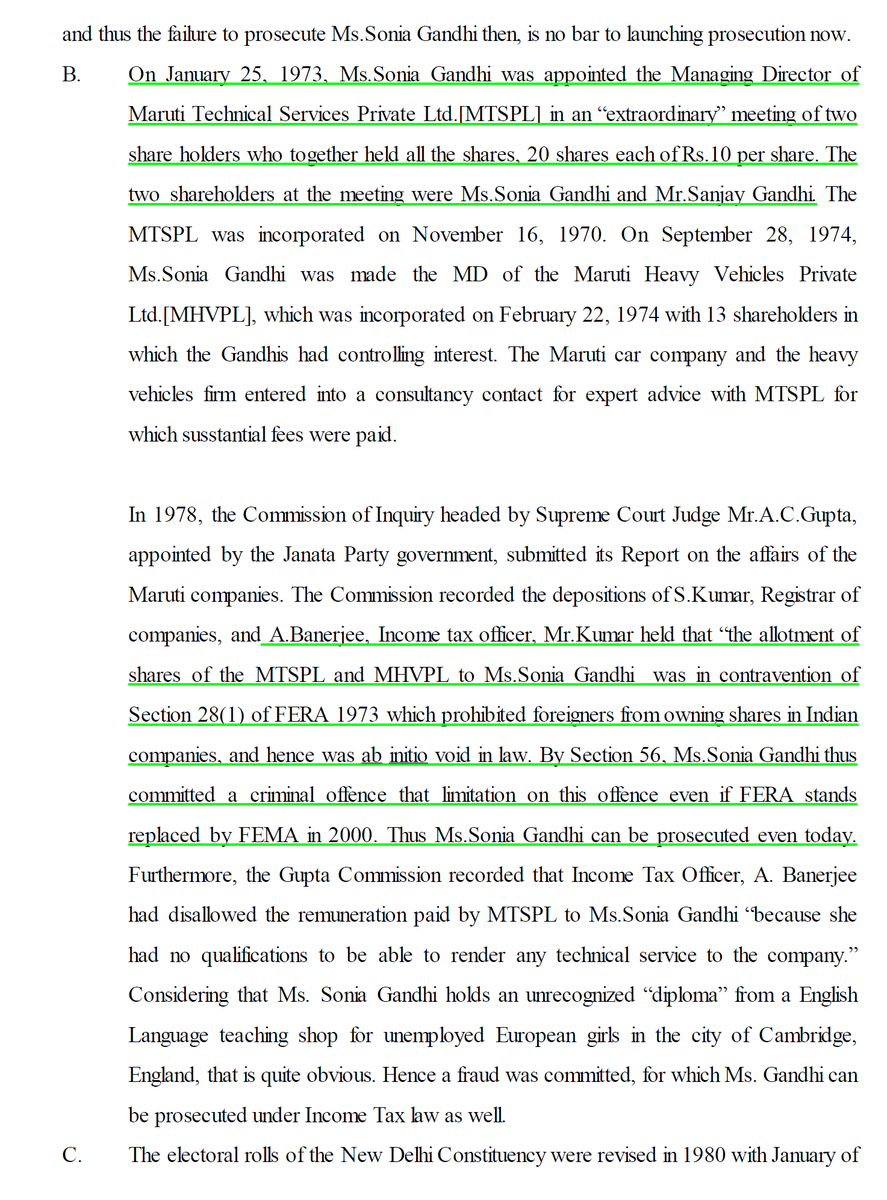
11/n Coming back to 6/n. Her offense was punishable under Section 31 of the Representation of Peoples Act 1950, of a maximum sentence of one year & fine. #AntoniaMaino can't even say that she was not willfully committing this grievous offense.
https://twitter.com/Aabhas24/status/1253376284085764096?s=20
12/n It is because to become a voter, one acknowledges Form 6 prepared under the Electors Rules 1960 in which affirmation of citizenship of India is essential. Hence she also committed offences under the Indian Penal Code, Sections 192 & 199, (3-year punishment). 
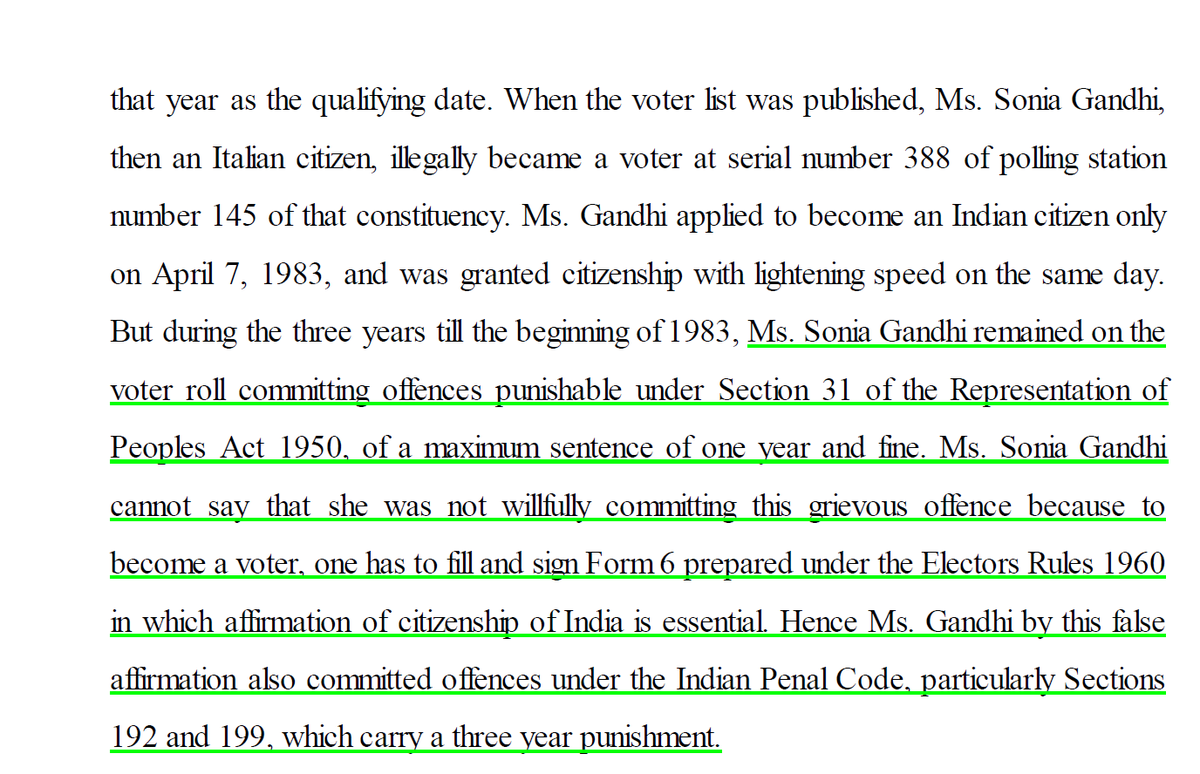
13/n #AntonioMaino , her sister and mother are candidates for inclusion in the Bofors bribery case FIR under Section 319 of the Cr.P.C., to be thus investigated and prosecuted.
Read the snippet of the charge sheet.
Read the snippet of the charge sheet.
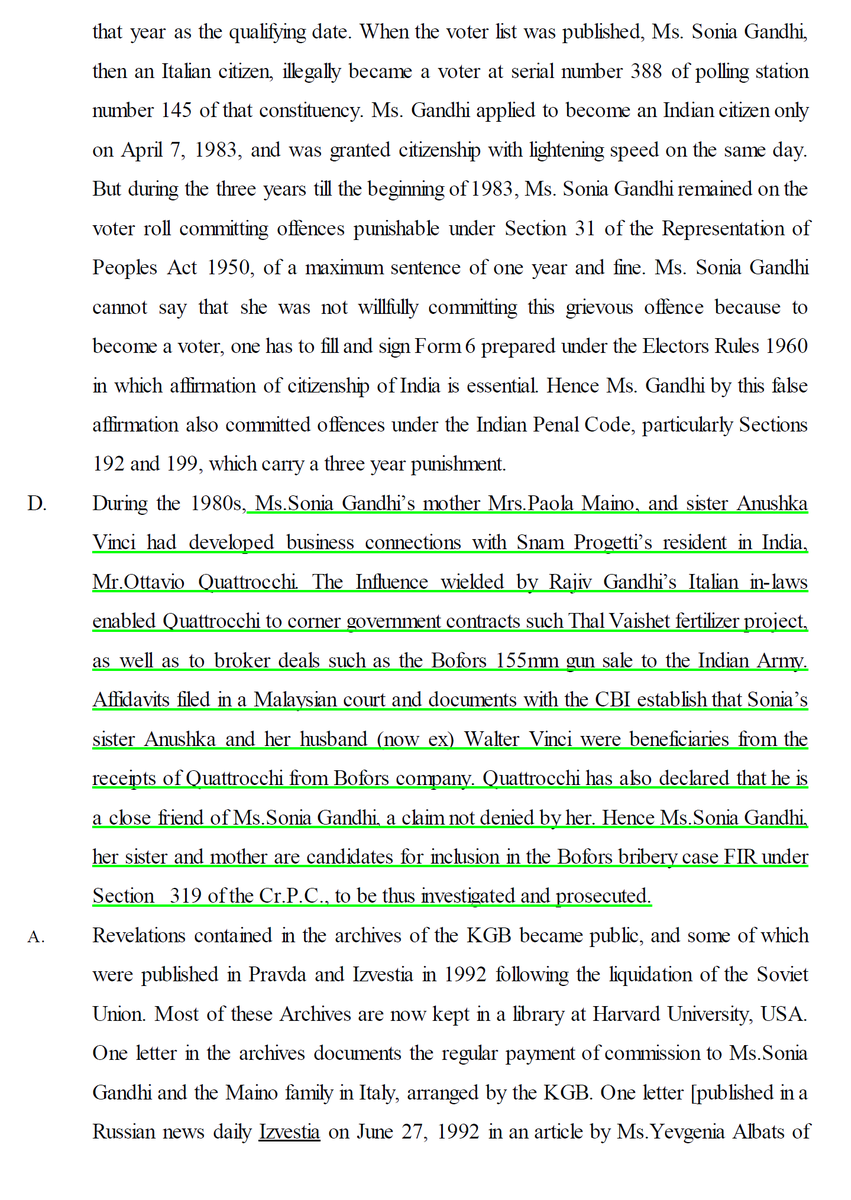
14/n The charge sheet further talks of one letter in the archives documents the regular payment of commission to #AntoniaMaino and the Maino family in Italy, arranged by the KGB.



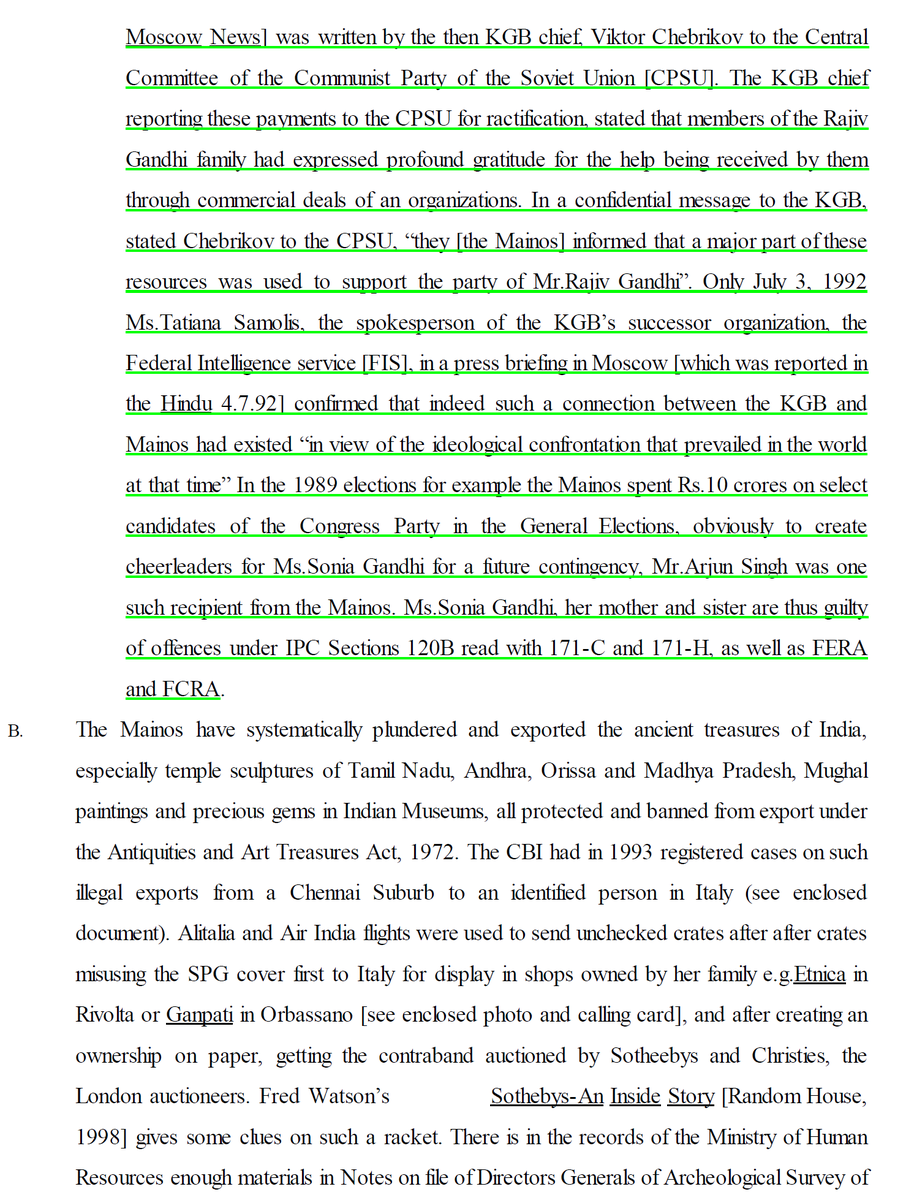
15/n One letter [published in a Russian news daily Izvestia on June 27, 1992, in an article by Ms.Yevgenia Albats of Moscow News] was written by the then KGB chief, Viktor Chebrikov to the Central Committee of the CPSU.
Snippet1(Charge-Sheet excerpt)
Snippet 2 (TOI, 27-6-92)


Snippet1(Charge-Sheet excerpt)
Snippet 2 (TOI, 27-6-92)
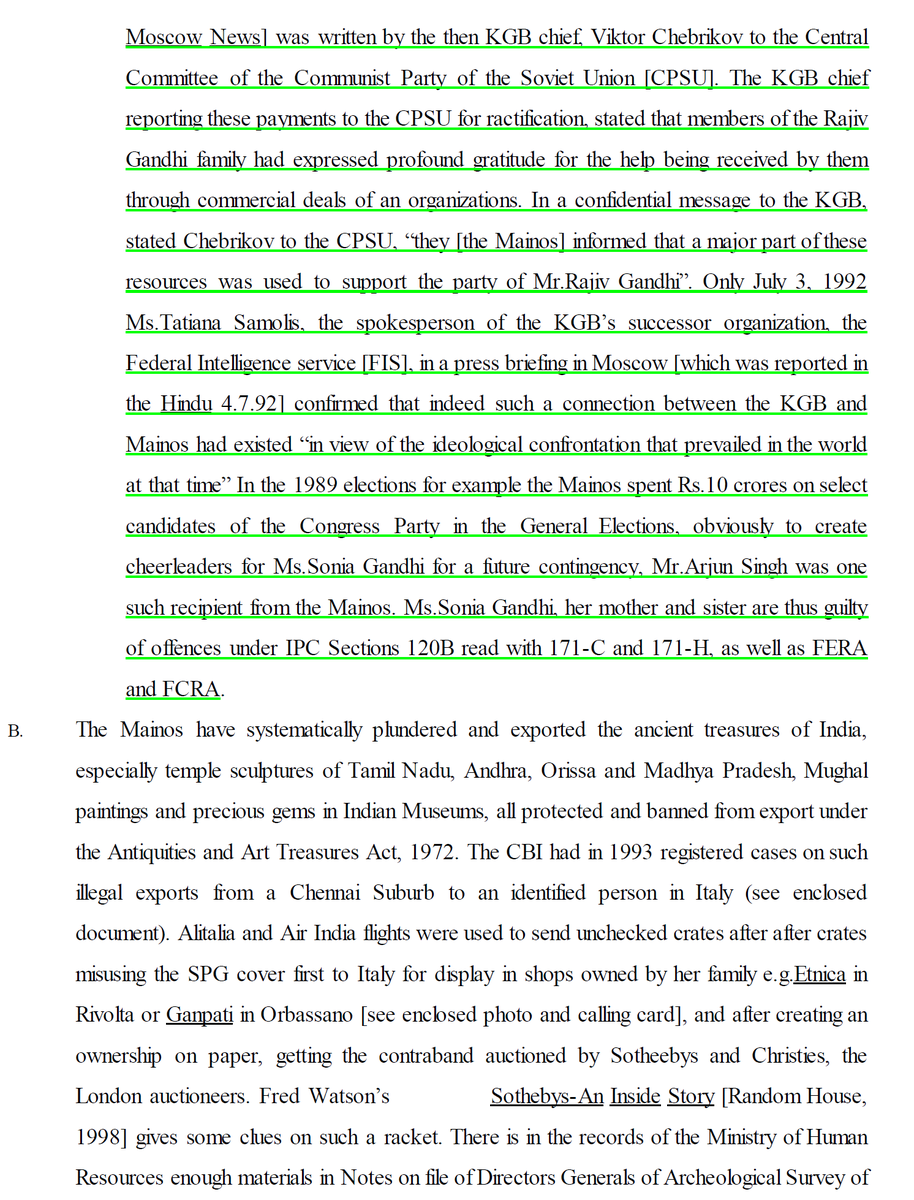
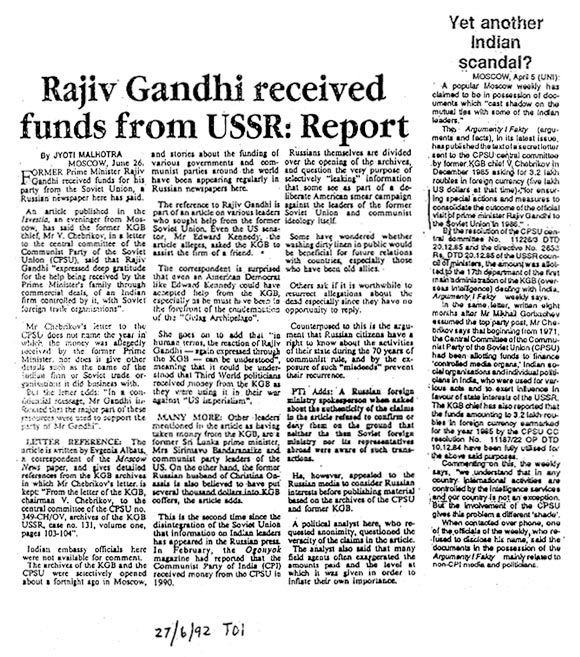
16/n Correction to 15/n (the newspaper snippet is of @the_hindu, not ToI).
Why was #AntoniaMaino on the payroll of Soviet? Why was she fluent in Russian? I'm not saying she is(was) an agent of the USSR but was she? more from 17/n to be posted tomorrow.
Why was #AntoniaMaino on the payroll of Soviet? Why was she fluent in Russian? I'm not saying she is(was) an agent of the USSR but was she? more from 17/n to be posted tomorrow.
https://twitter.com/Aabhas24/status/1253439463381819393?s=20
17/n So @JhaSanjay let us continue exposing the "Criminal Jewels" of the "Family". Yesterday I had left it with News Report mentioning KGB Personal's letter about funds being given to #AntoniaMaino . Let's move ahead.
https://twitter.com/Aabhas24/status/1253440407280607233?s=20
18/n The letter written on 13/12/85 also mentions about the use of 320,000 Rubles to consolidate the meetings during Rajiv Gandhi and Sonia Gandhi's visit.
The letter mentions continual contact with the son of R Gandhi. @RahulGandhi certainly, u, is it not? U were 15 then, right?
The letter mentions continual contact with the son of R Gandhi. @RahulGandhi certainly, u, is it not? U were 15 then, right?

19/n 3/71992 Ms.Tatiana Samolis, the spokesperson of the FIS, in a press briefing in Moscow [The Hindu 4/7/92, snippet]confirmed that such a connection between the KGB & Rajiv's family had existed“in view of the ideological confrontation that prevailed in the world at that time” 
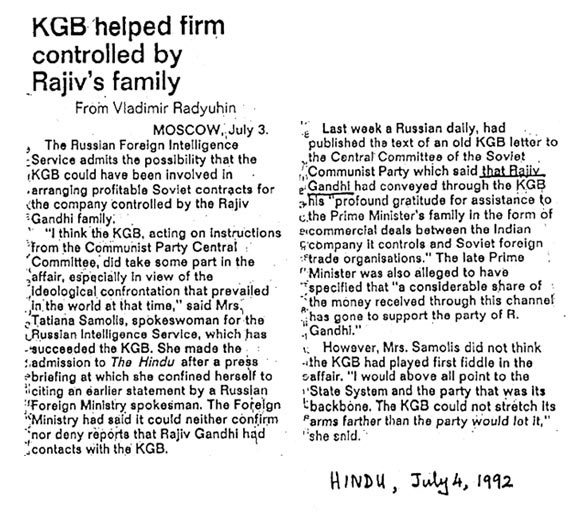
20/n 1989 elections,the Mainos spent Rs.10 crores on select candidates of the @INCIndia to create cheerleaders for #AntoniaMaino . Hence, her mother, sister & she are thus guilty of offenses under IPC Sections 120B (+171C & 171H)as well as FERA & FCRA.
Snippet from Charge-sheet
Snippet from Charge-sheet
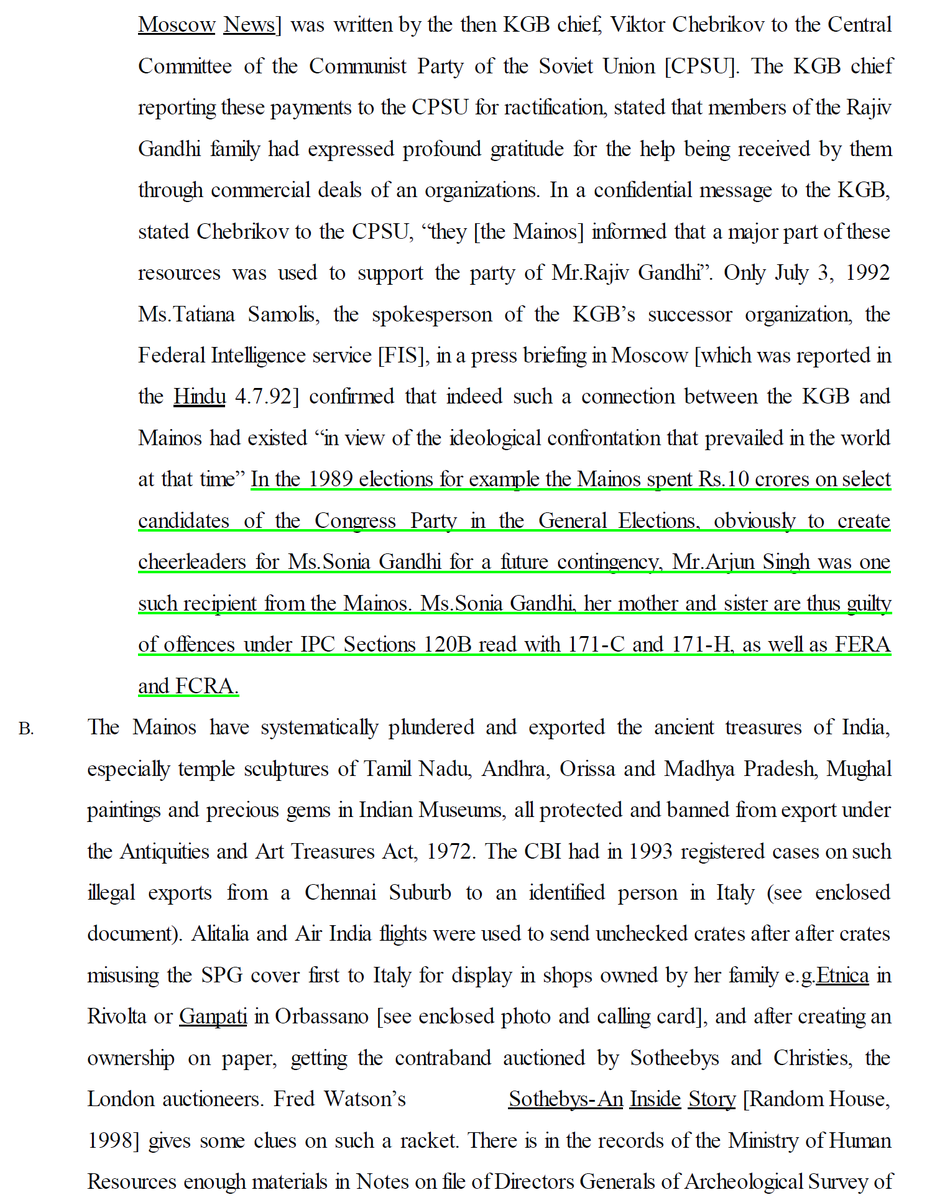
22/n On page-3 of the report, it is clearly mentioned that USSR used to direct most of the funds to Congress-I, and then to the Communists.
The USSR had controlled 35 years of first 35 Independent years of India.
The USSR had controlled 35 years of first 35 Independent years of India.
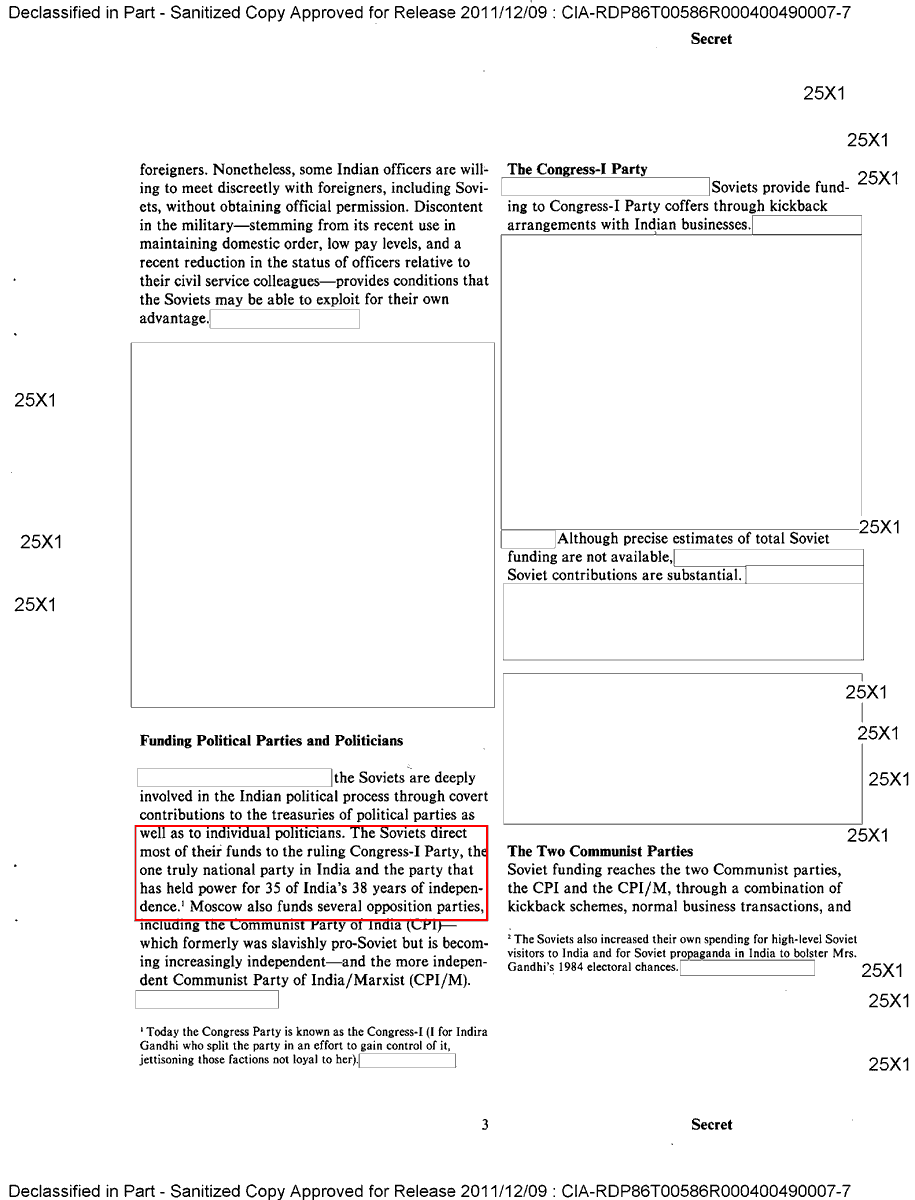
23/n Initially I had spoken about "Antique Theft" by Maino in beginning.
Here is the visiting card of store "Ganpati" at Viale Regina Margherita, Orbassano & Image of the store owned by #AntoniaMaino 's sister.


Here is the visiting card of store "Ganpati" at Viale Regina Margherita, Orbassano & Image of the store owned by #AntoniaMaino 's sister.
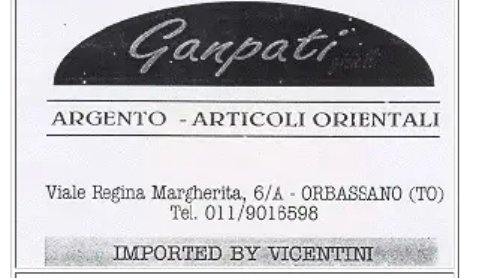

24/n From the charge-sheet: In 1993 CBI had registered cases on such illegal exports from a Chennai Suburb to an identified person in Italy. Alitalia and Air India flights were used to send unchecked crates after crates misusing the SPG cover first to Italy .



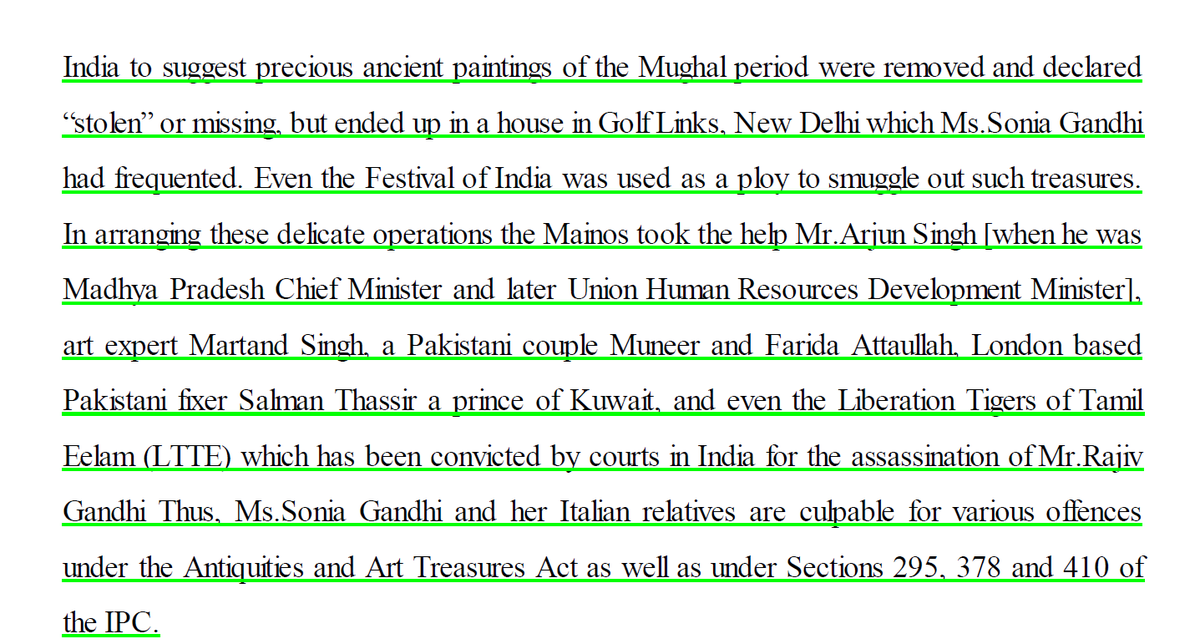
25/n And then after creating ownership on paper, getting the contraband auctioned by Sotheebys and Christies, the
London auctioneers. The book "Sothebys-An Inside Story" gives some clues about such a racket.
London auctioneers. The book "Sothebys-An Inside Story" gives some clues about such a racket.
26/n Even @HRDMinistry owns enough materials in Notes on the file of Directors Generals of Archeological Survey of India to suggest precious ancient paintings were removed and declared “stolen” or missing but ended up in a house in Golf Links, New Delhi.
27/n Even the "Festival of India" was used as a ploy to smuggle out such treasures. In arranging these delicate operations the Mainos took the help of Gov hands,
art expert Martand Singh, a Pakistani couple Muneer, and Farida Attaullah.
art expert Martand Singh, a Pakistani couple Muneer, and Farida Attaullah.
28/n She even took the help of Pakistani fixer Salman Thassir a prince of Kuwait and even the LTTE. Thus, #AntoniaMaino and her Italian relatives are culpable for various offences under the Antiquities and Art Treasures Act as well as under Sections 295, 378 and 410 of
the IPC.
the IPC.
29/n Now this is interesting @JhaSanjay . "Schweizer Illustrierte" published a story on 11/11/91 which disclosed that 14 rulers or ex-rulers of the third world countries have a deposit equivalent to Rs. 5 lakh 50 thousand crores in Swiss banks.
Check the snippet.
Check the snippet.
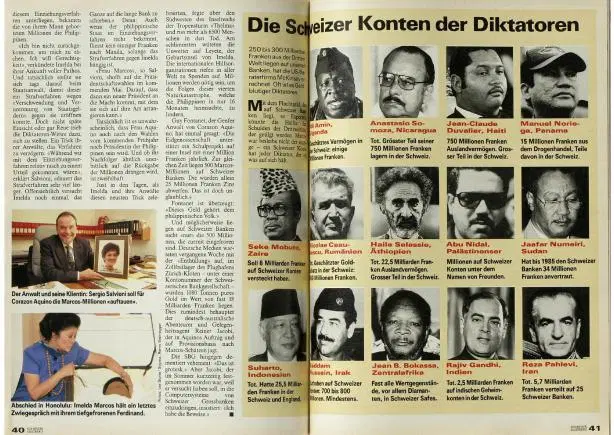
30/n @JhaSanjay remember, it also had the name of Rajiv Gandhi.
The amount said to be deposited by Rajiv Gandhi in various Swiss Banks was 2 billion US dollars.
The amount said to be deposited by Rajiv Gandhi in various Swiss Banks was 2 billion US dollars.
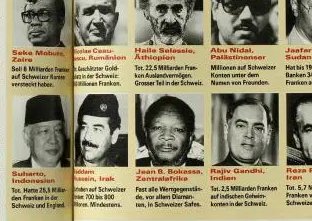
31/n @JhaSanjay you know @Swamy39 did get the clarification of "Rajiv Gandhi's name" & amount mentioned in the magazine.
Here is the snippet of the letter.
Here is the snippet of the letter.
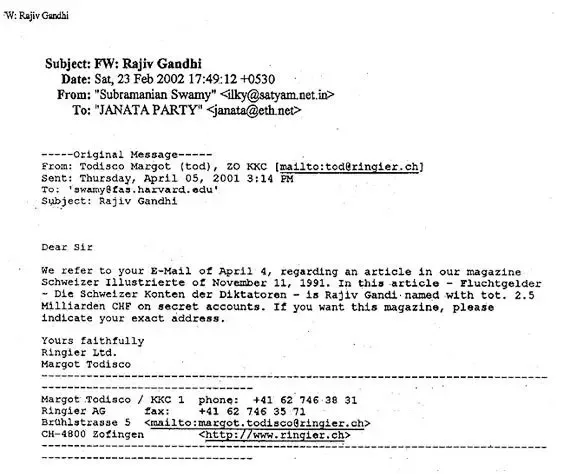
32/n #AntoniaMaino suddenly decided to accompany Natwar Singh for the first bilateral trip to Russia. She traveled to the city of Vladimir and Suzdal, where her father Stefan Maino was POW. Now read this excerpt from @wikileaks & relate the quoted tweet.

https://twitter.com/Aabhas24/status/1253440407280607233?s=20

33/n @JhaSanjay I'm sure that you would be aware of the fact that LTTE was responsible for the assassination of Rajiv Gandhi.
What did you Madame #AntoniaMaino do?
Sonia Gandhi’s plea for commuting the death
penalty for her husband’s killers? archive.indianexpress.com/news/death-row…
What did you Madame #AntoniaMaino do?
Sonia Gandhi’s plea for commuting the death
penalty for her husband’s killers? archive.indianexpress.com/news/death-row…
34/n In providing 1 acre of land near the IGI Airport, for housing the Periyar Centre for the pro-LTTE & secessionist
DMK which had been indicted in R Gandhi’s assassination. Source: Jain
Commission(Part III, Vol.IV, Chapter VII, Pages 161-73)
DMK which had been indicted in R Gandhi’s assassination. Source: Jain
Commission(Part III, Vol.IV, Chapter VII, Pages 161-73)
35/n There 7 key members were sentenced along with 19 others of the LTTE by the Supreme Court, for participating in the assassination conspiracy.
@JhaSanjay you may like to read this cover story by @PrabhuChawla . Check images for quick access.
media1.intoday.in/indiatoday/ima…




@JhaSanjay you may like to read this cover story by @PrabhuChawla . Check images for quick access.
media1.intoday.in/indiatoday/ima…
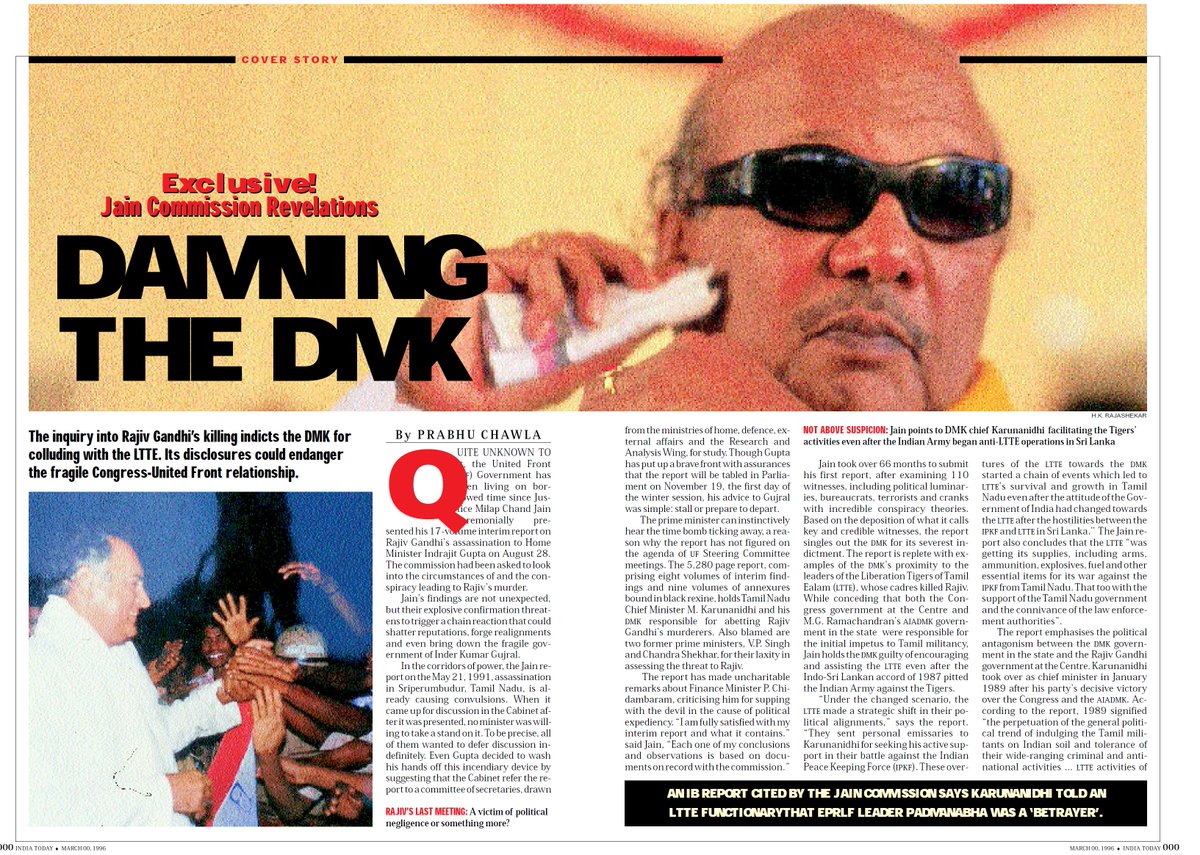
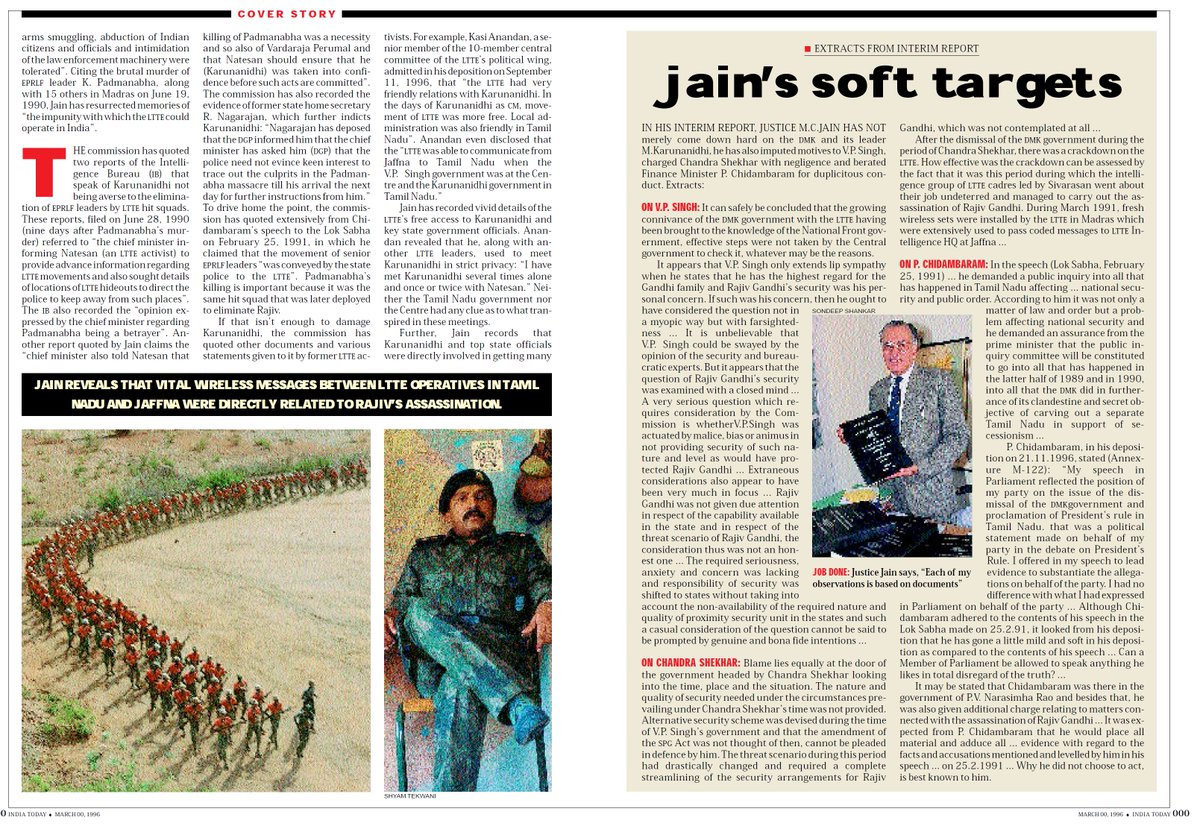
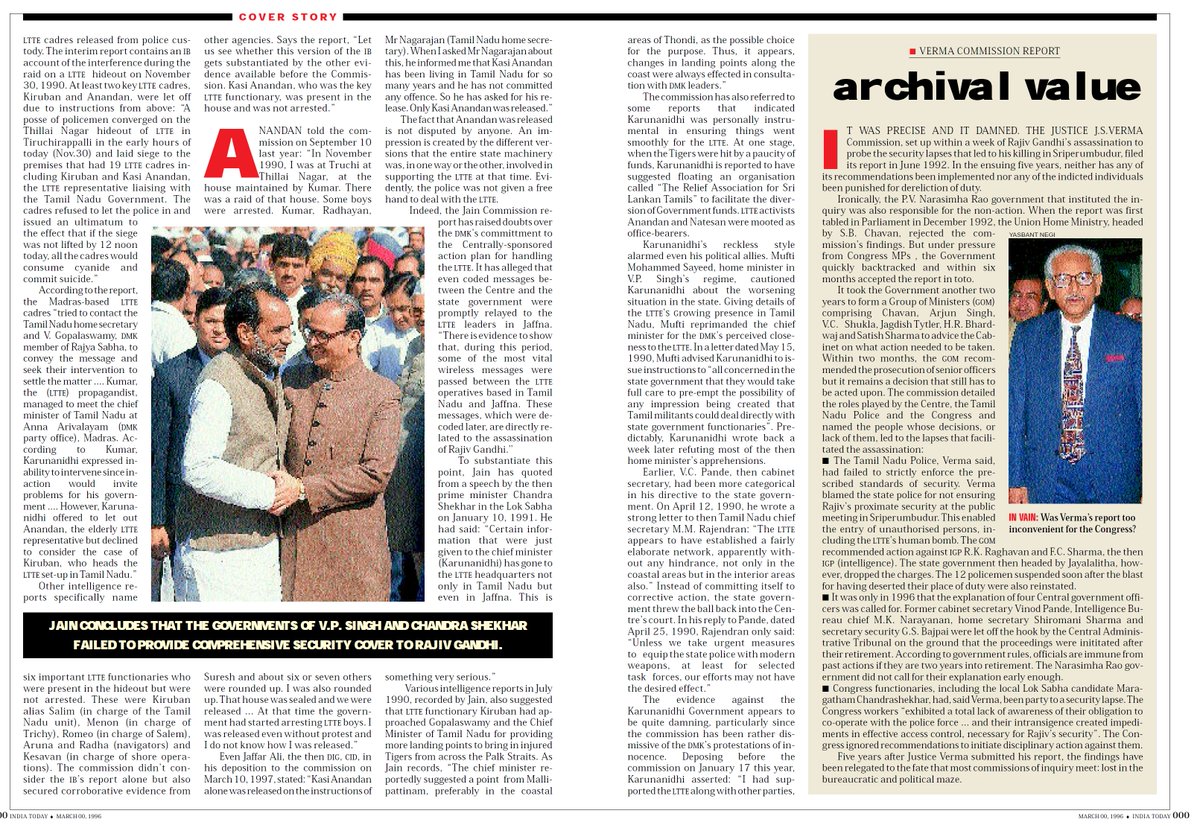
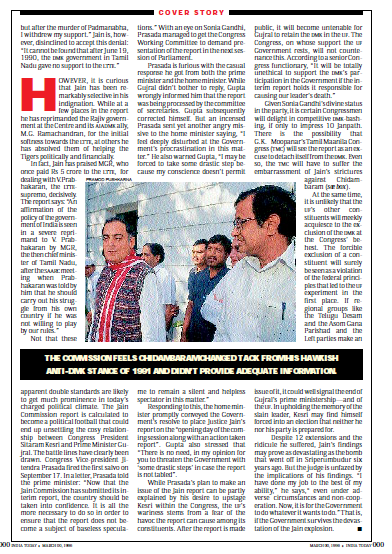
36/n @JhaSanjay this is a shame that your party President supported the Assasin Party of @INCIndia Party Member and PM Rajiv Gandhi.
Not to forget Mr Jain had warned of a very large international conspiracy. @HMOIndia you must act upon it.
Not to forget Mr Jain had warned of a very large international conspiracy. @HMOIndia you must act upon it.
https://twitter.com/Aabhas24/status/1253719019686727682?s=20
• • •
Missing some Tweet in this thread? You can try to
force a refresh
































